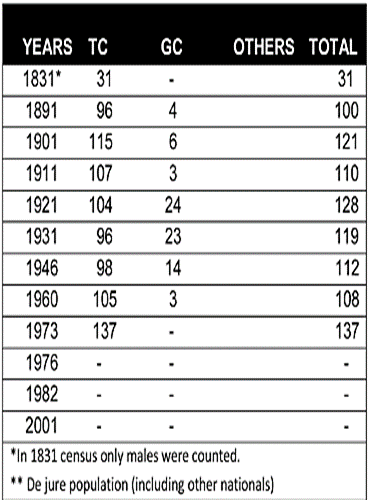Abandoned Villages of the Diarizos Valley: 2)
Maronas/ Ulucam - The Forgotten Peak
The Forgotten Peak
Atop the heights where warm winds wail,
A village sleeps, so stark, so pale,
.A broken gate, a rusted bell,
A fountain dry where wishes fell.
But when the moon with silver gleam
Illuminates the frozen dream,
The village stirs in fleeting light,
A memory held within the night.
The mountain guards this lonely place,
Wrapped in its mist’s embrace,
A silent witness, vast and still,
To time’s great march, to fate’s cold will.
From our lofty heights we skeletons keep watch, like lookouts over the valley, invisible from the highway that traces the length of the vale, along which our brothers and sisters, villages of the Diarizos, lie, alive or dead.
But we are here – skeletal remains, undisturbed on our mountain perch.
You want to find us? Turn off the highway that traces the right bank of the Diarizos just past the village of Ayios Georgios onto a dirt track. Shortly it will cross a small fragile ford over the Diarizos river bed that is normally dry but at certain times of the year will trickle tantalisingly with water. Now on the left bank the track winds upward on a whispered breeze through wild looking almond and olive groves, hiding the valley below. Sunlight penetrates in golden shafts of light from the high-strung sun. Around one last bend our abandoned village of Maronas unfolds, spread out on the steep slope, the valley below in a dream of green and gold.






Where did the village get its name? Depends which home you ask.
Predictably our Christian residents - when we had them - gave the honour of the Greek name to a 4th century hermit from the Taurus mountains, and the Maronite Christian movement which found its way to Cyprus. St Maron, the mountain ascetic, would have felt at home in our towering hideaway.
The name survived the arrival of the Ottoman’s better than the Maronites themselves. My friend, the crumbling barn at the end of our track, mischeivously claims that it was perhaps a sense of guilt that fathered the adoption by the Muslim majority of the more secular and congenial Turkish name of Uluçam – magnificent pine tree. I feel sympathy for the many imposing olive trees which frame and blend into our frail structures that they were not worthy of recognition.






The calm of our mountain retreat, with its spectacular sunsets and warm currents on which kestrels glide and dive, frightening the common warbler minstrels from their nests, began to dissolve before the foundations on which I was built had time to settle. First our Greek houses emptied, their occupants scattering into nearby villages. One family held out longer – my tenants, the only Greek voices on our streets in my youth. But stories of troubles up and down the valley were whispered and soon I was left empty too.










For a while our hollowed village revived. Our location – off the main thoroughfare, hidden in the clouds – attracted Turkish families from the other side of the valley in search of sanctuary from brewing troubles. Once again my walls absorbed kitchen smells and ricocheted with the noises of human life.
Although welcomed by our imam whose cami was full again, I heard that our muhtar was agnostic about the new arrivals, with more earthly concerns over the hillside slopes’ capability to support our expanded community. He did not fret for long.
The muhtar’s qualms and my restored homely comforts soon became collateral damage to man’s disputations. For over a year I heard the sounds of walls and ceilings wailing as mothers packed bundles, tied tight. Doors were left ajar and the breeze wandered in. Footsteps faded on overgrown paths, only the wind sang a hymn, but without hope. Our boarders faded away with the inevitability of an early morning mist that hides at the bottom of our valley waiting to be evaporated by the rising sun’s rays.







Today echoes are left unheard, windows stare out hollow-eyed, rooftops decay – a village on a map with no markings, abandoned, pigs the only residents. Our mosque has its roof in place – its dignity in contrast to the homes of its former congregation. Their roots reaching out like grasping fingers, trees wrap around and inside fallen buildings whose walls mark the outline of former lives. Now we are left alone with nature, high and exposed, eavesdropping on passersbys below.
Maronas/ Ulucam Population Census
Source: PRIO - Cyprus


